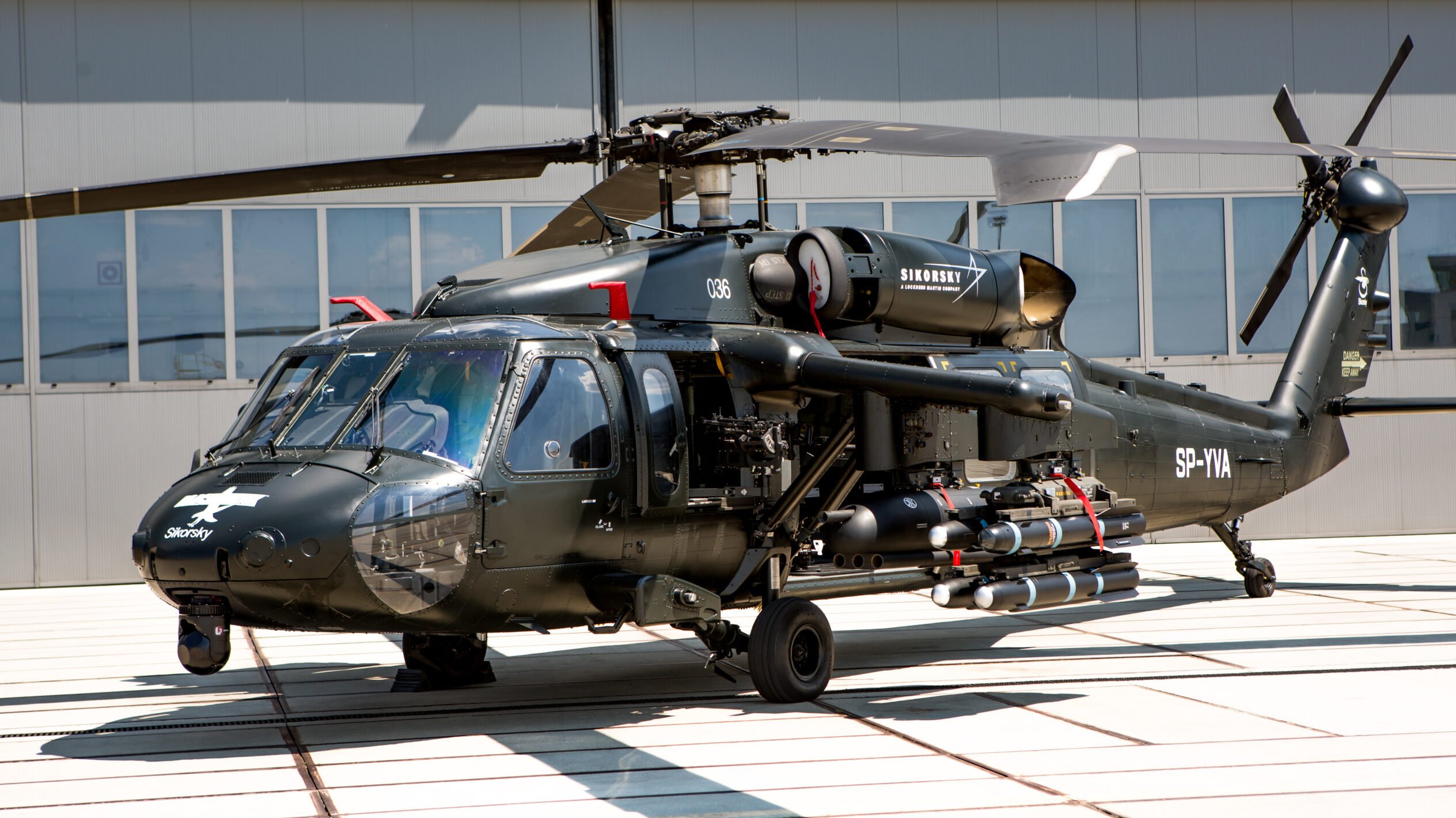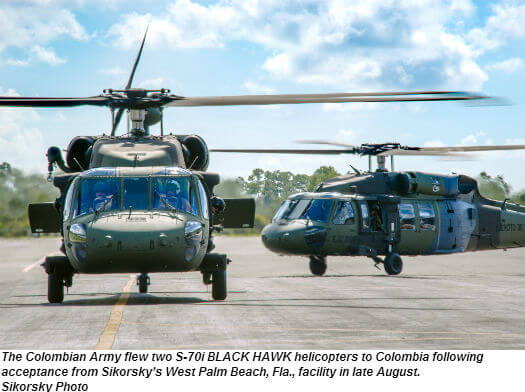Sikorsky S 70: Enhancing Helicopter Effectiveness and Flexibility
Sikorsky S 70: Enhancing Helicopter Effectiveness and Flexibility
Blog Article
High-Performance Multi-Role Rotorcraft Featuring Advanced Cockpit Technologies and Integrated Sensing Unit Solutions
The realm of rotorcraft technology has seen remarkable advancements in current times, particularly in the world of high-performance multi-role rotorcraft outfitted with advanced cockpit technologies and flawlessly incorporated sensor systems. These developments have not just boosted the functional capabilities of rotorcraft but have actually also significantly influenced modern-day aeronautics procedures on various fronts. From enhanced mission versatility to improved operational efficiency, the convergence of advanced cockpit technologies and incorporated sensing unit systems has actually introduced a brand-new era of opportunities for rotorcraft applications. In the following conversation, we will explore the evolution of rotorcraft technology, look into the world of innovative cockpit developments, and analyze the implications of incorporated sensor systems on the functional convenience and performance of contemporary rotorcraft.
Advancement of Rotorcraft Technology
The advancement of rotorcraft modern technology has been marked by significant advancements in the rules of aerodynamics, products, and propulsion systems, shaping the abilities and performance of modern rotorcraft. Wind resistant enhancements have enhanced the efficiency and maneuverability of rotorcraft, permitting raised rate, agility, and stability during flight (sikorsky s 70). Developments in products, such as using composite materials and advanced alloys, have caused lighter yet more powerful rotorcraft frameworks, improving total performance and toughness. In addition, advancements in propulsion systems, including extra effective engines and innovative propulsion innovations, have actually allowed rotorcraft to achieve higher altitudes, faster rates, and better payloads.
These innovations have not just changed the abilities of rotorcraft however have additionally increased their applications throughout different markets, consisting of armed forces, commercial, and emergency situation solutions. The constant advancement of rotorcraft technology remains to drive technology in the field, pushing the boundaries of what is possible and forming the future of vertical trip.
Advanced Cockpit Innovations
Structure upon the fundamental advancements in aerodynamics, materials, and propulsion systems, the world of rotorcraft innovation now moves emphasis in the direction of introducing Advanced Cockpit Innovations. The combination of advanced innovations within the cockpit setting plays a vital function in boosting the functional capabilities, safety, and performance of modern-day rotorcraft. sikorsky s 70. Advanced Cockpit Innovations encompass a broad range of attributes created to give pilots with improved situational understanding, structured information monitoring, and user-friendly control interfaces
Among the crucial innovations in cabin design is the implementation of glass cockpits, which change traditional analog assesses with high-resolution display screens. These electronic systems use customizable layouts, real-time information assimilation, and enhanced readability, making it possible for pilots to accessibility important info at a glance. Additionally, advanced avionics systems, such as fly-by-wire controls and increased fact screens, are transforming just how pilots engage with the airplane, enabling exact control and boosted decision-making capabilities.


Including sophisticated cabin technologies not only improves pilot efficiency yet likewise adds to overall objective effectiveness and safety and security in complex operational atmospheres. By leveraging advanced technologies within the cockpit, rotorcraft producers are setting brand-new criteria for operational excellence and goal success.
Integrated Sensing Unit Equipments
With the advancement of rotorcraft innovation, the integration of sophisticated Integrated Sensing unit Solution has actually become vital in boosting functional efficiency and safety and security. These Integrated Sensor Equipments encompass a broad array of technologies that supply vital data for different features such as navigating, security, targeting, and environmental tracking. By perfectly incorporating sensors like radars, electronic cameras, lidar, and infrared systems into rotorcraft, operators can benefit from boosted situational understanding, improved objective capacities, and reduced pilot workload.
One trick advantage of Integrated Sensing unit Solutions is their capacity to gather real-time information and give actionable understandings to pilots and goal operators. Advanced radar systems can identify and track targets over long distances, enabling for very early risk discovery and efficient reaction preparation. In addition, integrating infrared and electro-optical electronic cameras enables rotorcraft to carry out reconnaissance and monitoring missions with precision and precision.
Essentially, the integration of cutting-edge sensor technologies into rotorcraft not just improves operational performance yet also contributes significantly to general objective success and staff safety and security. As rotorcraft proceed to develop, the duty of Integrated Sensing unit Equipment will most look at here now certainly remain at the leading edge of innovation in the aerospace market.
Functional Flexibility and Effectiveness
Enhancing functional flexibility and efficiency in rotorcraft is an all-natural development from the assimilation of innovative Integrated Sensing unit Equipments. By leveraging the data and understandings offered by these advanced sensor systems, rotorcraft can enhance their performance across various objectives and atmospheres.
Functional versatility includes the capacity of rotorcraft to adjust to different roles and circumstances effectively. With sophisticated cockpit modern technologies and integrated sensing unit systems, rotorcraft can seamlessly shift in between tasks such as search and rescue, medical emptying, surveillance, and much more. This flexibility enhances the rotorcraft's capability to satisfy diverse operational needs without calling for extensive reconfiguration.
Efficiency in rotorcraft procedures is vital for taking full advantage of mission effectiveness and resource usage. Integrated sensor systems play a pivotal role in enhancing functional effectiveness by giving real-time information on weather, surface mapping, target tracking, and a lot more. This data allows pilots to make enlightened choices swiftly, optimize trip paths, preserve gas, and boost total objective performance.
Effect On Modern Air Travel Procedures

Moreover, the assimilation of advanced sensing units helps with enhanced objective planning and execution, enabling rotorcraft to carry out a vast range of tasks with boosted precision. From search and rescue procedures to aerial firefighting and police objectives, the capacities of modern-day rotorcraft furnished with sophisticated cabin innovations and incorporated sensor systems this are exceptional.
Additionally, the influence of these improvements extends past functional performance to cost-effectiveness and sustainability. By enhancing trip courses, fuel usage, and maintenance timetables, high-performance rotorcraft outfitted with advanced cockpit innovations and sensors contribute to decreasing operational prices and ecological influence, making them essential properties in modern-day aviation procedures.
Verdict
In final thought, the high-performance multi-role rotorcraft with sophisticated cabin technologies and integrated sensor systems stands for a significant advancement in aeronautics innovation. These technologies improve operational versatility and efficiency, inevitably affecting modern-day aeronautics procedures in a positive method. The combination of these sophisticated modern technologies permits for enhanced capabilities and performance in different objective situations, showcasing the proceeded development of rotorcraft technology in the aviation market.
The world of rotorcraft modern technology has actually seen significant innovations in recent times, specifically in the realm of high-performance multi-role rotorcraft equipped with sophisticated cockpit technologies and perfectly incorporated sensing unit systems. From boosted mission convenience to improved functional effectiveness, the convergence of innovative cockpit technologies and integrated sensor systems has ushered in a brand-new period of possibilities for rotorcraft applications. In the complying with conversation, we will certainly explore the advancement of rotorcraft technology, delve right into the world of sophisticated cabin technologies, and take a look at the ramifications of incorporated sensing unit systems on the operational versatility and performance of contemporary rotorcraft.

Report this page